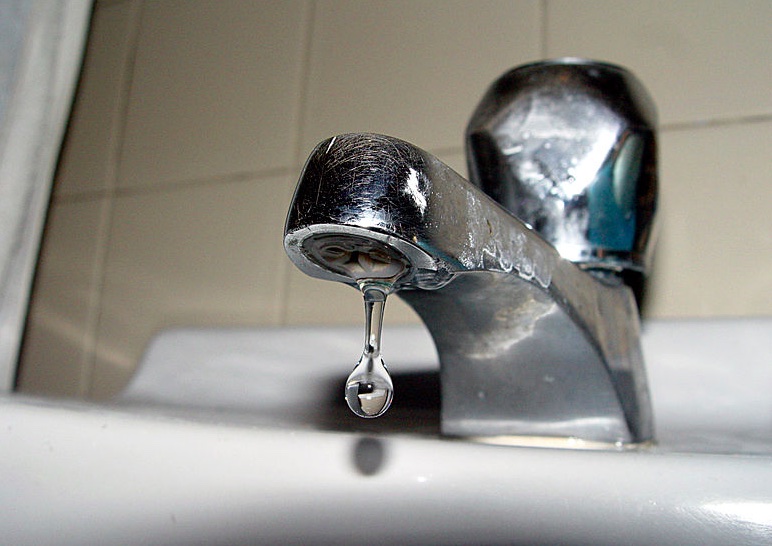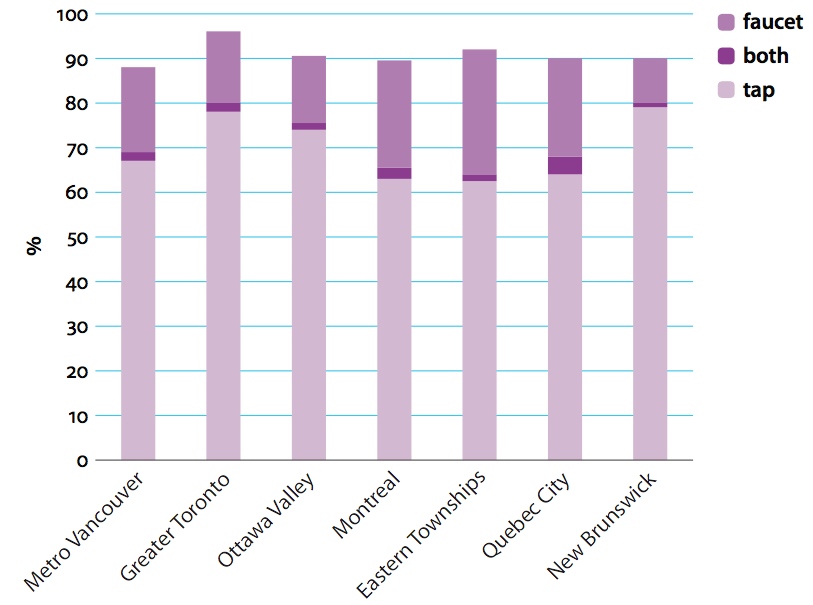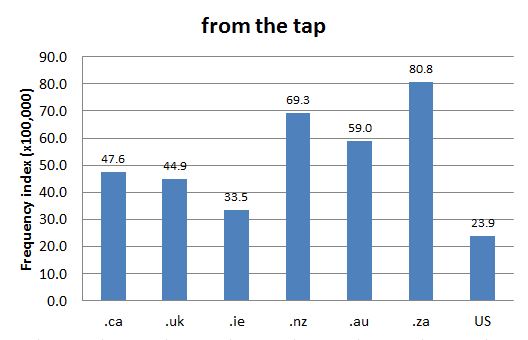DCHP-2
tap DCHP-2 (October 2016)
n. — originally Construction
a device with valve controlling the flow of water, usually over a sink (see Image 1).
Type: 2. Preservation — Tap in this sense refers to the device used to regulate the flow of water, which is also called a "faucet" or "spigot", especially in many American locations. Boberg (2005: 46, Table 5) notes that today tap is the majority variant in Canada over the predominantly American variant "faucet", which is a minor variant in Canada.
It is common for tap to be used attributively in the compound noun tap water to distinguish it from bottled water (see the 2007 quotation). This use is international. However, the status of tap 'faucet', as in "to turn on the tap to let the water run" is a preserved lexical item from British English (see EDD, s.v. "tap" (sb.2)). Chambers (2008) offers comparative Canada-US data (see Chart 1, from Dollinger 2015b: Figure 4.3). As Chart 1 shows, tap is the majority term in all seven Canadian regions, which is not the case, quite on the contrary, on the American side, where tap does not even reach 20 percent and where "faucet" is the most common term.
Chambers (2008: 18) argues that the difference between Canada and the US came with increased immigration from Britain in the mid-1800s. Dollinger (2015b: 98) adds that indoor plumbing became widely available at a time when "British immigration had brought the British term for the appliance: tap", adding that "Canadian-British trade relations probably solidified the use of the non-American term in Canada". Charts 2 and 3 offer further evidence for this claim. While the phrase "from the tap" includes a number of contexts (e.g. beer) where the term is in use in the US, still the use in the US is half that of Canada. One can also see that the favoured British term is used in other parts of the Commonwealth and thus marks a success story of trade in the British Empire that exported not just the goods, but the terms, such as tap, with it.
COD-2 defines the term (n1 (1)), but does not label it.References:
Images:

Image 1: A tap (faucet). Source: Wikimedia Commons. Photo: Á. González
Chart 1: Tap and faucet in the Dialect Topography of Canada database 1991-2004 (source: Chambers 2008, chart from Dollinger 2015b: Figure 4.3 )
Chart 2: Internet Domain Search, 13 Nov. 2014
